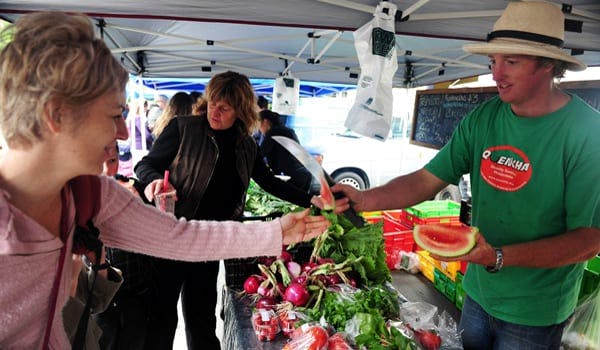Growth in the farmers’ market model has seen the introduction of new safeguards and strict quality assurance mechanisms in South Australia.
The tougher measures are being introduced at the Adelaide Farmers’ Market in order to stamp out on-selling and provide greater assurance to customers that farmers are selling their own genuine produce.
Adelaide Farmers’ Market chairman Graham Brookman told Dynamic Business there were occasions in which some stall-operators had attempted to sneak in produce that was not their own. Sometimes this was because of economic pressures like a bad harvest while other-times it was opportunistic.
“There’s hundreds of farmers’ markets in Australia already and our market turns over about $10 million a year. You multiply that out, it is actually quite a significant sector. Where there’s money to be made, there are temptations to be non-compliant,” he said.
Under the new regime, inspectors will be trained to examine a farmer’s property and approve a list of goods that can be sold at market. On market days, compliance checks can be undertaken with pictures and notes taken of goods sold at various stalls. A “tip-off” system will also be implemented by which the market manager can be alerted to evidence of inappropriate behaviour. Stall-holders have already been accredited under the new regime at the Adelaide Farmers’ Market.
The costs of the policing regime will ultimately be passed on to the consumer, but Mr Brookman said people were willing to pay a reasonable price for fresh quality food. He said a major factor in the popularity of farmers’ markets was community interest in seeing farmers take home profits rather than money being hived off by a middle-man like Coles or Woolworths. This can be the difference between bankruptcy and viability for some farmers, he added.
Business at farmers’ markets can actually prove lucrative for many. Mr Brookman said it was possible for some operators to take home $15,000 at the end of the day, with each stall-holder having access to between 5000 and 6000 potential customers.
“We have actually started a second market at Prospect and our intention is to set up farmers’ markets around the metro area all with the same quality standards,” he said.
The Adelaide Farmers’ Market has grown quite rapidly from about 50 stalls when it started in 2006 to about 130 today.
Research findings based on a survey of 286 farmers and food business stallholders last month found that nearly 80 per cent of respondents made a profit through the stall.
The report titled Understanding the Characteristics of Australian Farmers’ Markets, published by the Rural Industries R&D Corporation, found that only 7 per cent of stallholders used farmers’ markets as the only means to sell their products.
While only 25 per cent of stallholders sold 75 per cent or more of their produce at farmers’ markets, 70 per cent of food businesses rated farmers’ markets as an important avenue in facilitating sales in other areas.

